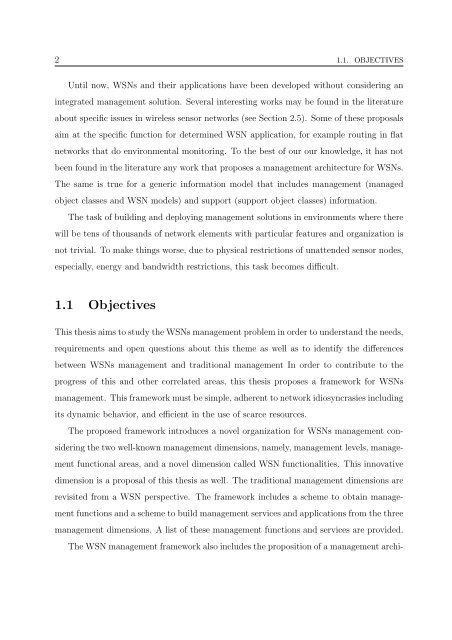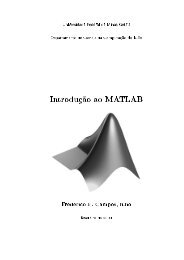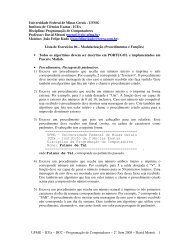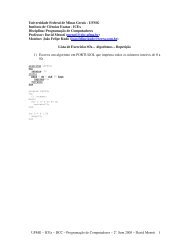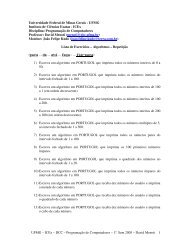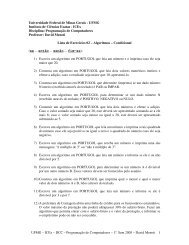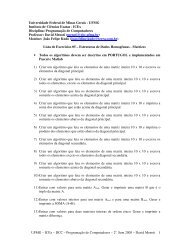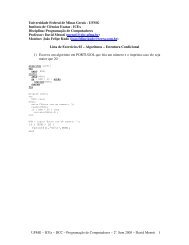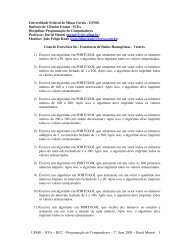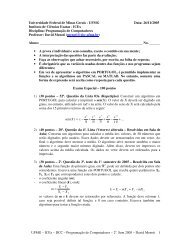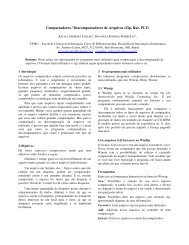MAN´A: Uma Arquitetura para Gerenciamento de Redes de ... - UFMG
MAN´A: Uma Arquitetura para Gerenciamento de Redes de ... - UFMG
MAN´A: Uma Arquitetura para Gerenciamento de Redes de ... - UFMG
Create successful ePaper yourself
Turn your PDF publications into a flip-book with our unique Google optimized e-Paper software.
2 1.1. OBJECTIVES<br />
Until now, WSNs and their applications have been <strong>de</strong>veloped without consi<strong>de</strong>ring an<br />
integrated management solution. Several interesting works may be found in the literature<br />
about specific issues in wireless sensor networks (see Section 2.5). Some of these proposals<br />
aim at the specific function for <strong>de</strong>termined WSN application, for example routing in flat<br />
networks that do environmental monitoring. To the best of our our knowledge, it has not<br />
been found in the literature any work that proposes a management architecture for WSNs.<br />
The same is true for a generic information mo<strong>de</strong>l that inclu<strong>de</strong>s management (managed<br />
object classes and WSN mo<strong>de</strong>ls) and support (support object classes) information.<br />
The task of building and <strong>de</strong>ploying management solutions in environments where there<br />
will be tens of thousands of network elements with particular features and organization is<br />
not trivial. To make things worse, due to physical restrictions of unatten<strong>de</strong>d sensor no<strong>de</strong>s,<br />
especially, energy and bandwidth restrictions, this task becomes difficult.<br />
1.1 Objectives<br />
This thesis aims to study the WSNs management problem in or<strong>de</strong>r to un<strong>de</strong>rstand the needs,<br />
requirements and open questions about this theme as well as to i<strong>de</strong>ntify the differences<br />
between WSNs management and traditional management In or<strong>de</strong>r to contribute to the<br />
progress of this and other correlated areas, this thesis proposes a framework for WSNs<br />
management. This framework must be simple, adherent to network idiosyncrasies including<br />
its dynamic behavior, and efficient in the use of scarce resources.<br />
The proposed framework introduces a novel organization for WSNs management con-<br />
si<strong>de</strong>ring the two well-known management dimensions, namely, management levels, manage-<br />
ment functional areas, and a novel dimension called WSN functionalities. This innovative<br />
dimension is a proposal of this thesis as well. The traditional management dimensions are<br />
revisited from a WSN perspective. The framework inclu<strong>de</strong>s a scheme to obtain manage-<br />
ment functions and a scheme to build management services and applications from the three<br />
management dimensions. A list of these management functions and services are provi<strong>de</strong>d.<br />
The WSN management framework also inclu<strong>de</strong>s the proposition of a management archi-


